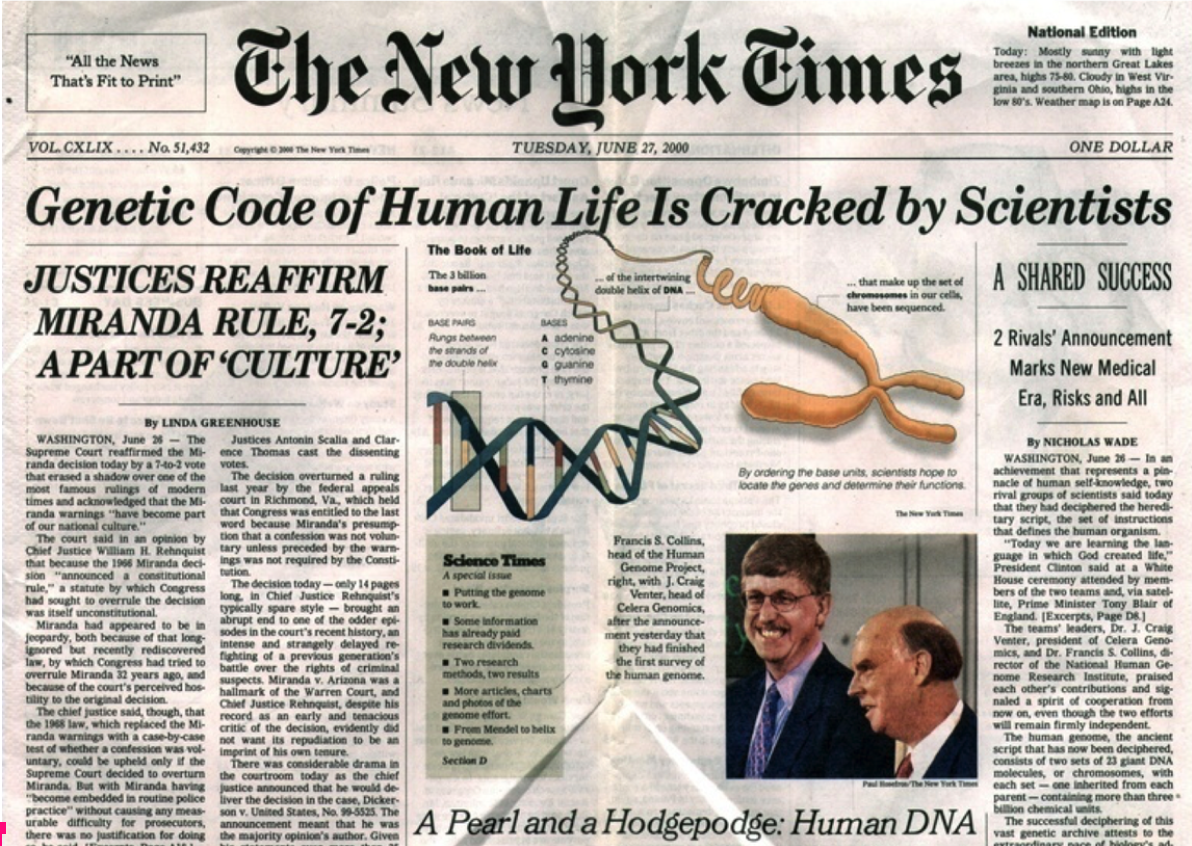
(Breast cancer, careresource.org)

(News Article, slideshare.net)

(Breast cancer, careresource.org)
The HGP has furthered our understanding of our genetic makeup which has caused better early detection and treatment for a host of inheritable diseases. The HGP’s barrier breaking work has led to earlier diagnosis and treatment options for inherited colon cancer, familial breast cancer, and Alzheimer’s. Before the mapping of the genome there was no way to check for the possibility of an unborn child having a genetic disease, meaning there was little-to-no understanding of how certain illnesses are affected by DNA.
The genetic mapping breakthrough of the HGP makes possible better screening for Down Syndrome, Cystic Fibrosis, and Tay-Sachs Disease. Since the completion of the Human Genome Project American infant mortality has dropped to seven deaths per 1000 births. Learning about the genetic makeup of fetuses has allowed doctors to be better prepared to help parents carrying fetuses with genetic disorders to term. Breaking the barrier of our DNA sequencing ignorance has greatly improved the quality of life for those born with a genetic disorder and the families who love them.

(Fetus, mindblowing-facts.org)

(Sperm & Egg, deccanchonicle.com)
What does it mean for us?
Because the HGP opened the barrier of knowledge about genetics, new developments are continuously being made. As research continues to exploit this broken barrier, our knowledge gained from the HGP will continue to discover new genetic understanding that will improve lives. Breaking the mapping barrier is the beginning of breaking of new barriers we didn’t know existed.
What diseases can we now fix or treat?
The benefits of the Human Genome Project extend to medicine, law, and the social sciences. Patients not seeing benefits from traditional medication can now get prescriptions specifically tailored to their genetic needs. Structural DNA knowledge allows for the building of medicines targeting specific gene markers that might otherwise be passed over by traditional medications. The human genome map has improved the ability of doctors to a test for a variety of genetic diseases in utero such as muscular dystrophy and spinal muscular atrophy. Egg fertilization techniques and choosing which eggs to carry to term helps to decrease the prevalence of birth defects and threats to infant survival.
Forensic scientists use our improved knowledge of the human genome in their efforts to assist law enforcement identify criminals. Hair, saliva, blood, and reproductive fluids all contain genetic information which medical examiners test to assign ownership to individuals. Our improved understanding of genetics has seen the barrier breaking knowledge used to prove the innocence of individuals accused, and, too often, wrongfully convicted.

(Scientist, sciencemag.org)